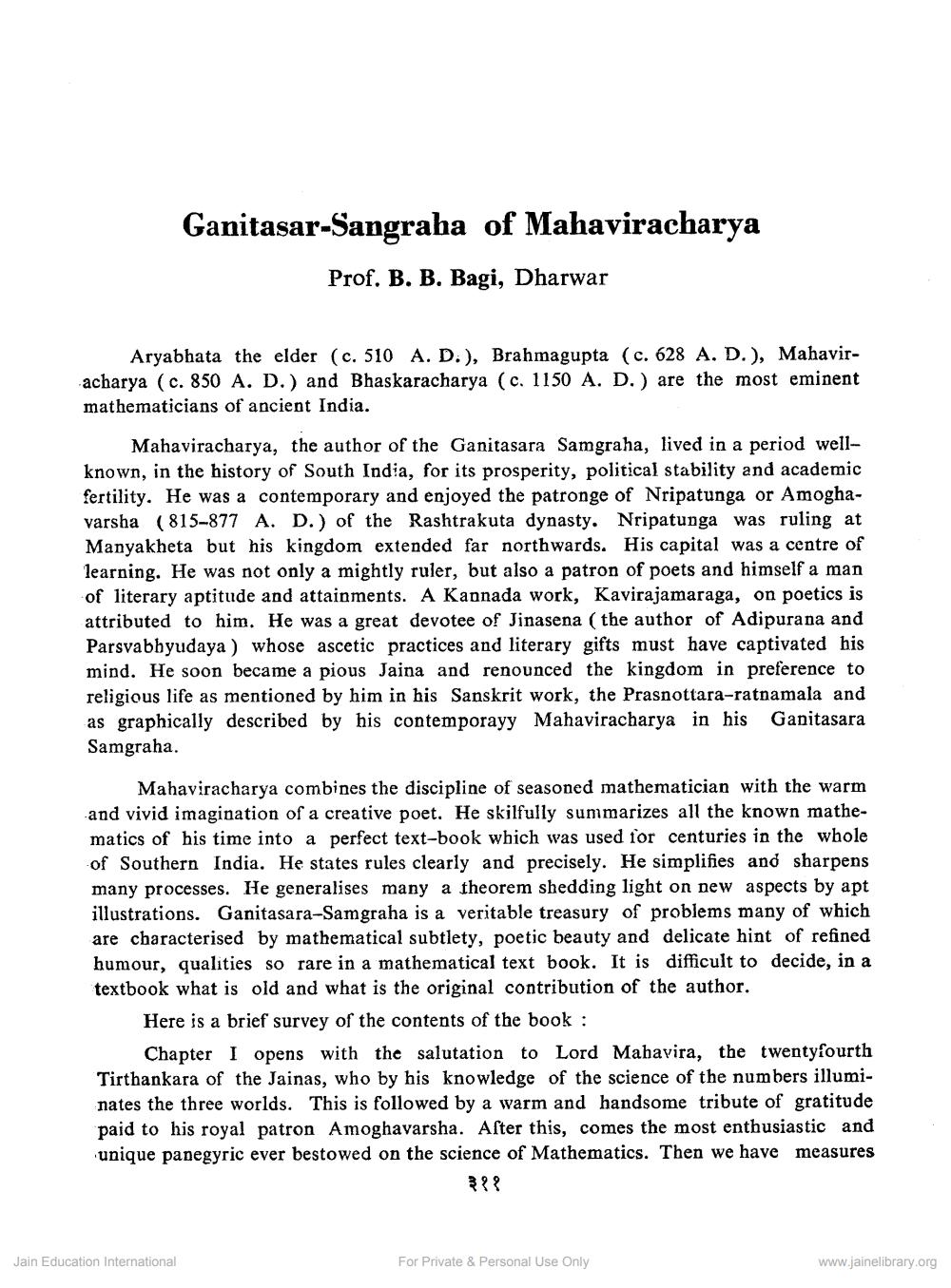Book Title: Ganitasara Sangraha Author(s): B B Bagi Publisher: Z_Acharya_Shantisagar_Janma_Shatabdi_Mahotsav_Smruti_Granth_012022.pdf View full book textPage 1
________________ Ganitasar-Sangraha of Mahaviracharya Prof. B. B. Bagi, Dharwar Aryabhata the elder (c. 510 A. D.), Brahmagupta (c. 628 A.D.), Mahaviracharya (c. 850 A. D.) and Bhaskaracharya (c. 1150 A. D.) are the most eminent mathematicians of ancient India. Mahaviracharya, the author of the Ganitasara Samgraha, lived in a period wellknown, in the history of South India, for its prosperity, political stability and academic fertility. He was a contemporary and enjoyed the patronge of Nripatunga or Amoghavarsha (815-877 A. D.) of the Rashtrakuta dynasty. Nripatunga was ruling at Manyakheta but his kingdom extended far northwards. His capital was a centre of learning. He was not only a mightly ruler, but also a patron of poets and himself a man of literary aptitude and attainments. A Kannada work, Kavirajamaraga, on poetics is attributed to him. He was a great devotee of Jinasena (the author of Adipurana and Parsvabhyudaya ) whose ascetic practices and literary gifts must have captivated his mind. He soon became a pious Jaina and renounced the kingdom in preference to religious life as mentioned by him in his Sanskrit work, the Prasnottara-ratnamala and as graphically described by his contemporayy Mahaviracharya in his Ganitasara Samgraha. Mahaviracharya combines the discipline of seasoned mathematician with the warm and vivid imagination of a creative poet. He skilfully summarizes all the known mathematics of his time into a perfect text-book which was used for centuries in the whole of Southern India. He states rules clearly and precisely. He simplifies and sharpens many processes. He generalises many a theorem shedding light on new aspects by apt illustrations. Ganitasara-Samgraha is a veritable treasury of problems many of which are characterised by mathematical subtlety, poetic beauty and delicate hint of refined humour, qualities so rare in a mathematical text book. It is difficult to decide, in a textbook what is old and what is the original contribution of the author. Here is a brief survey of the contents of the book : Chapter I opens with the salutation to Lord Mahavira, the twentyfourth Tirthankara of the Jainas, who by his knowledge of the science of the numbers illuminates the three worlds. This is followed by a warm and handsome tribute of gratitude paid to his royal patron Amoghavarsha. After this, comes the most enthusiastic and unique panegyric ever bestowed on the science of Mathematics. Then we have measures ३११ Jain Education International For Private & Personal Use Only www.jainelibrary.orgPage Navigation
1 2 3 4
